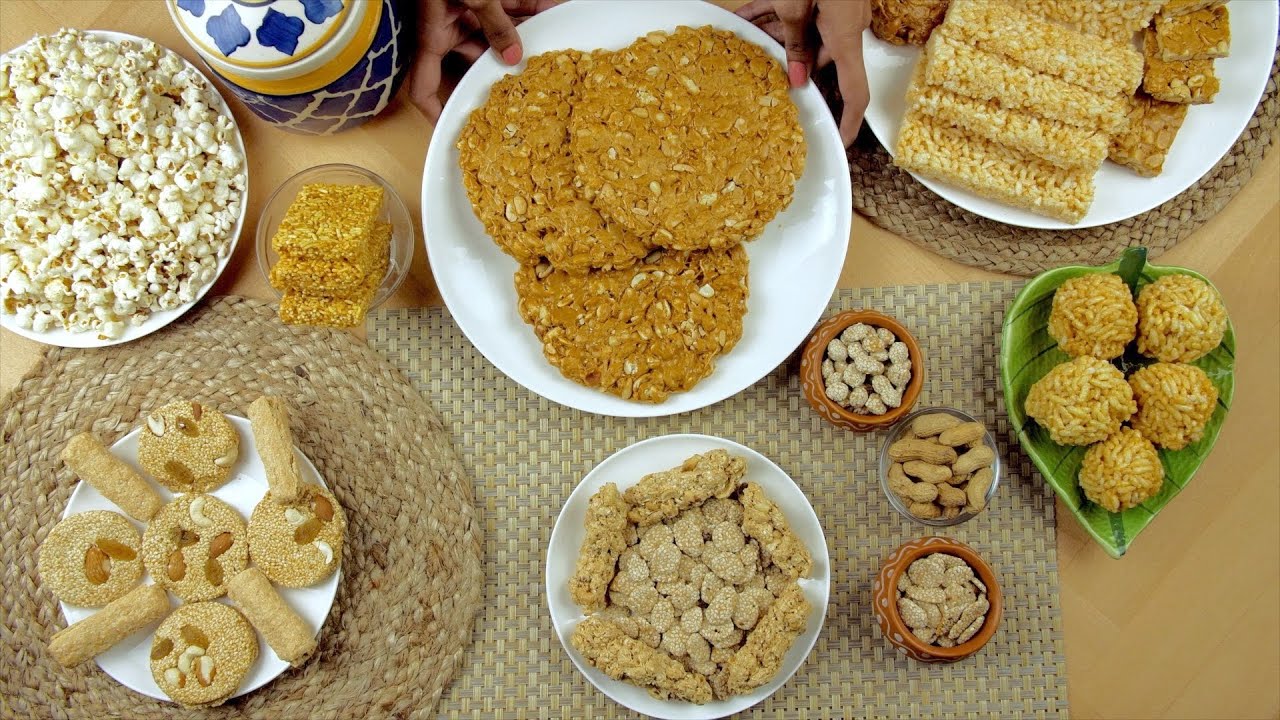Introduction to lohri:
Lohri, a vibrant and joyous festival celebrated predominantly in the northern regions of India, holds significant cultural and historical importance. This harvest festival marks the end of winter and the onset of longer days, bringing warmth and cheer to the lives of people. The celebration of Lohri is steeped in tradition, folklore, and the rich agricultural heritage of the region.
Historical Roots:
The origins of Lohri can be traced back to ancient times when agricultural communities relied on the changing seasons for their livelihood. Lohri is believed to have originated from the Punjab region, where farmers celebrated the successful harvest by expressing gratitude to the Sun God for the abundant crops. The festival is also associated with the end of the winter solstice, symbolizing the triumph of light over darkness.
Table of Contents
Legend of Dulla Bhatti:

One of the most popular legends associated with Lohri revolves around the folk hero, Dulla Bhatti. A legendary figure known for his acts of bravery and compassion, Dulla Bhatti is said to have lived during the reign of Mughal Emperor Akbar. According to folklore, Dulla Bhatti rescued girls from being forcibly taken away and provided them with dowries, ensuring their well-being. During Lohri, people sing folk songs narrating the tales of Dulla Bhatti, celebrating his heroic deeds and expressing gratitude for his benevolence.
Customs and Traditions:
Lohri is marked by a series of customs and traditions that bring communities together. The festivities usually begin with families and friends gathering around a bonfire. The bonfire symbolizes the Sun God, and people offer prayers for a prosperous harvest and abundance in the coming year. Traditional folk songs, or “boliyan,” are sung, and people perform traditional dance forms like Bhangra and Giddha, adding to the festive atmosphere.
Pongal in South India:
While Lohri is primarily celebrated in North India, a similar festival called Pongal is celebrated in the southern states, particularly in Tamil Nadu. Both festivals share common roots in agriculture and the celebration of harvest, emphasizing the unity in diversity across the country.
Culinary Delights:
Lohri celebrations are incomplete without traditional Punjabi delicacies. Families indulge in preparing and sharing treats like rewri, gajak, sesame seeds, and jaggery sweets, symbolizing the bounty of the harvest season. The traditional dish of Sarson da Saag and Makki di Roti is a staple during Lohri, adding a touch of culinary delight to the festivities.
Conclusion:
Lohri stands as a testament to the cultural richness and diversity of India. Its historical roots in agrarian traditions, coupled with vibrant customs and legends, make it a festival that brings communities together in joy and gratitude. As people gather around the bonfire, sing folk songs, and share traditional sweets, Lohri continues to be a celebration of life, warmth, and the spirit of unity.
ਜਾਣ-ਪਛਾਣ:
ਲੋਹੜੀ, ਭਾਰਤ ਦੇ ਉੱਤਰੀ ਖੇਤਰਾਂ ਵਿੱਚ ਮੁੱਖ ਤੌਰ ‘ਤੇ ਮਨਾਇਆ ਜਾਂਦਾ ਇੱਕ ਜੀਵੰਤ ਅਤੇ ਖੁਸ਼ੀ ਦਾ ਤਿਉਹਾਰ, ਮਹੱਤਵਪੂਰਨ ਸੱਭਿਆਚਾਰਕ ਅਤੇ ਇਤਿਹਾਸਕ ਮਹੱਤਵ ਰੱਖਦਾ ਹੈ। ਇਹ ਵਾਢੀ ਦਾ ਤਿਉਹਾਰ ਸਰਦੀਆਂ ਦੇ ਅੰਤ ਅਤੇ ਲੰਬੇ ਦਿਨਾਂ ਦੀ ਸ਼ੁਰੂਆਤ ਨੂੰ ਦਰਸਾਉਂਦਾ ਹੈ, ਲੋਕਾਂ ਦੇ ਜੀਵਨ ਵਿੱਚ ਨਿੱਘ ਅਤੇ ਖੁਸ਼ੀ ਲਿਆਉਂਦਾ ਹੈ। ਲੋਹੜੀ ਦਾ ਜਸ਼ਨ ਪਰੰਪਰਾ, ਲੋਕਧਾਰਾ ਅਤੇ ਖੇਤਰ ਦੀ ਅਮੀਰ ਖੇਤੀਬਾੜੀ ਵਿਰਾਸਤ ਨਾਲ ਭਰਿਆ ਹੋਇਆ ਹੈ।
ਇਤਿਹਾਸਕ ਜੜ੍ਹਾਂ:
ਲੋਹੜੀ ਦੀ ਸ਼ੁਰੂਆਤ ਪ੍ਰਾਚੀਨ ਸਮੇਂ ਤੋਂ ਕੀਤੀ ਜਾ ਸਕਦੀ ਹੈ ਜਦੋਂ ਖੇਤੀਬਾੜੀ ਭਾਈਚਾਰੇ ਆਪਣੀ ਰੋਜ਼ੀ-ਰੋਟੀ ਲਈ ਬਦਲਦੇ ਮੌਸਮਾਂ ‘ਤੇ ਨਿਰਭਰ ਕਰਦੇ ਸਨ। ਮੰਨਿਆ ਜਾਂਦਾ ਹੈ ਕਿ ਲੋਹੜੀ ਦੀ ਸ਼ੁਰੂਆਤ ਪੰਜਾਬ ਖੇਤਰ ਤੋਂ ਹੋਈ ਹੈ, ਜਿੱਥੇ ਕਿਸਾਨਾਂ ਨੇ ਭਰਪੂਰ ਫਸਲਾਂ ਲਈ ਸੂਰਜ ਦੇਵਤਾ ਦਾ ਧੰਨਵਾਦ ਕਰਦੇ ਹੋਏ ਸਫਲ ਵਾਢੀ ਦਾ ਜਸ਼ਨ ਮਨਾਇਆ। ਇਹ ਤਿਉਹਾਰ ਸਰਦੀਆਂ ਦੇ ਸੰਕ੍ਰਮਣ ਦੇ ਅੰਤ ਨਾਲ ਵੀ ਜੁੜਿਆ ਹੋਇਆ ਹੈ, ਜੋ ਹਨੇਰੇ ਉੱਤੇ ਰੌਸ਼ਨੀ ਦੀ ਜਿੱਤ ਦਾ ਪ੍ਰਤੀਕ ਹੈ।
ਦੁੱਲਾ ਭੱਟੀ ਦੀ ਕਥਾ:
ਲੋਹੜੀ ਨਾਲ ਜੁੜੀਆਂ ਸਭ ਤੋਂ ਪ੍ਰਸਿੱਧ ਕਥਾਵਾਂ ਵਿੱਚੋਂ ਇੱਕ ਲੋਕ ਨਾਇਕ ਦੁੱਲਾ ਭੱਟੀ ਦੇ ਦੁਆਲੇ ਘੁੰਮਦੀ ਹੈ। ਇੱਕ ਮਹਾਨ ਹਸਤੀ ਜੋ ਉਸਦੀ ਬਹਾਦਰੀ ਅਤੇ ਹਮਦਰਦੀ ਦੇ ਕੰਮਾਂ ਲਈ ਜਾਣੀ ਜਾਂਦੀ ਹੈ, ਦੁੱਲਾ ਭੱਟੀ ਨੂੰ ਮੁਗਲ ਬਾਦਸ਼ਾਹ ਅਕਬਰ ਦੇ ਸ਼ਾਸਨਕਾਲ ਦੌਰਾਨ ਰਹਿੰਦਾ ਦੱਸਿਆ ਜਾਂਦਾ ਹੈ। ਲੋਕ-ਕਥਾਵਾਂ ਦੇ ਅਨੁਸਾਰ, ਦੁੱਲਾ ਭੱਟੀ ਨੇ ਕੁੜੀਆਂ ਨੂੰ ਜ਼ਬਰਦਸਤੀ ਖੋਹਣ ਤੋਂ ਬਚਾਇਆ ਅਤੇ ਉਨ੍ਹਾਂ ਦੀ ਤੰਦਰੁਸਤੀ ਨੂੰ ਯਕੀਨੀ ਬਣਾਉਂਦੇ ਹੋਏ, ਉਨ੍ਹਾਂ ਨੂੰ ਦਾਜ ਦਿੱਤਾ। ਲੋਹੜੀ ਦੇ ਦੌਰਾਨ, ਲੋਕ ਦੁੱਲਾ ਭੱਟੀ ਦੀਆਂ ਕਹਾਣੀਆਂ ਨੂੰ ਸੁਣਾਉਂਦੇ ਹੋਏ ਲੋਕ ਗੀਤ ਗਾਉਂਦੇ ਹਨ, ਉਸਦੇ ਬਹਾਦਰੀ ਭਰੇ ਕੰਮਾਂ ਦਾ ਜਸ਼ਨ ਮਨਾਉਂਦੇ ਹਨ ਅਤੇ ਉਸਦੀ ਉਪਕਾਰ ਲਈ ਧੰਨਵਾਦ ਪ੍ਰਗਟ ਕਰਦੇ ਹਨ।
ਰੀਤੀ ਰਿਵਾਜ ਅਤੇ ਪਰੰਪਰਾਵਾਂ:
ਲੋਹੜੀ ਨੂੰ ਰੀਤੀ-ਰਿਵਾਜਾਂ ਅਤੇ ਪਰੰਪਰਾਵਾਂ ਦੀ ਇੱਕ ਲੜੀ ਦੁਆਰਾ ਚਿੰਨ੍ਹਿਤ ਕੀਤਾ ਗਿਆ ਹੈ ਜੋ ਭਾਈਚਾਰਿਆਂ ਨੂੰ ਇਕੱਠੇ ਲਿਆਉਂਦੇ ਹਨ। ਤਿਉਹਾਰ ਆਮ ਤੌਰ ‘ਤੇ ਪਰਿਵਾਰਾਂ ਅਤੇ ਦੋਸਤਾਂ ਦੇ ਇਕੱਠੇ ਹੋਣ ਨਾਲ ਸ਼ੁਰੂ ਹੁੰਦੇ ਹਨ। ਬੋਨਫਾਇਰ ਸੂਰਜ ਦੇਵਤਾ ਦਾ ਪ੍ਰਤੀਕ ਹੈ, ਅਤੇ ਲੋਕ ਆਉਣ ਵਾਲੇ ਸਾਲ ਵਿੱਚ ਇੱਕ ਖੁਸ਼ਹਾਲ ਵਾਢੀ ਅਤੇ ਭਰਪੂਰਤਾ ਲਈ ਪ੍ਰਾਰਥਨਾ ਕਰਦੇ ਹਨ। ਰਵਾਇਤੀ ਲੋਕ ਗੀਤ, ਜਾਂ “ਬੋਲੀਆਂ” ਗਾਏ ਜਾਂਦੇ ਹਨ, ਅਤੇ ਲੋਕ ਤਿਉਹਾਰਾਂ ਦੇ ਮਾਹੌਲ ਨੂੰ ਜੋੜਦੇ ਹੋਏ, ਭੰਗੜਾ ਅਤੇ ਗਿੱਧਾ ਵਰਗੇ ਰਵਾਇਤੀ ਨਾਚ ਰੂਪ ਪੇਸ਼ ਕਰਦੇ ਹਨ।
ਦੱਖਣੀ ਭਾਰਤ ਵਿੱਚ ਪੋਂਗਲ:
ਜਦੋਂ ਕਿ ਲੋਹੜੀ ਮੁੱਖ ਤੌਰ ‘ਤੇ ਉੱਤਰੀ ਭਾਰਤ ਵਿੱਚ ਮਨਾਈ ਜਾਂਦੀ ਹੈ, ਪੋਂਗਲ ਨਾਂ ਦਾ ਇੱਕ ਸਮਾਨ ਤਿਉਹਾਰ ਦੱਖਣੀ ਰਾਜਾਂ, ਖਾਸ ਕਰਕੇ ਤਾਮਿਲਨਾਡੂ ਵਿੱਚ ਮਨਾਇਆ ਜਾਂਦਾ ਹੈ। ਦੋਵੇਂ ਤਿਉਹਾਰ ਖੇਤੀ ਵਿੱਚ ਸਾਂਝੀਆਂ ਜੜ੍ਹਾਂ ਅਤੇ ਵਾਢੀ ਦੇ ਜਸ਼ਨ ਨੂੰ ਸਾਂਝਾ ਕਰਦੇ ਹਨ, ਦੇਸ਼ ਭਰ ਵਿੱਚ ਅਨੇਕਤਾ ਵਿੱਚ ਏਕਤਾ ਉੱਤੇ ਜ਼ੋਰ ਦਿੰਦੇ ਹਨ।
ਰਸੋਈ ਦੀਆਂ ਖੁਸ਼ੀਆਂ:
ਲੋਹੜੀ ਦਾ ਤਿਉਹਾਰ ਰਵਾਇਤੀ ਪੰਜਾਬੀ ਪਕਵਾਨਾਂ ਤੋਂ ਬਿਨਾਂ ਅਧੂਰਾ ਹੈ। ਪਰਿਵਾਰ ਵਾਢੀ ਦੇ ਮੌਸਮ ਦੀ ਬਰਕਤ ਦਾ ਪ੍ਰਤੀਕ, ਰੀਵੜੀ, ਗਜਾਕ, ਤਿਲ ਅਤੇ ਗੁੜ ਦੀਆਂ ਮਿਠਾਈਆਂ ਵਰਗੇ ਭੋਜਨ ਤਿਆਰ ਕਰਨ ਅਤੇ ਸਾਂਝੇ ਕਰਨ ਵਿੱਚ ਸ਼ਾਮਲ ਹੁੰਦੇ ਹਨ। ਲੋਹੜੀ ਦੇ ਦੌਰਾਨ ਸਰਸੋਂ ਦਾ ਸਾਗ ਅਤੇ ਮੱਕੀ ਦੀ ਰੋਟੀ ਦਾ ਰਵਾਇਤੀ ਪਕਵਾਨ ਇੱਕ ਮੁੱਖ ਹੁੰਦਾ ਹੈ, ਜੋ ਤਿਉਹਾਰਾਂ ਵਿੱਚ ਰਸੋਈ ਦੀ ਖੁਸ਼ੀ ਦਾ ਛੋਹ ਦਿੰਦਾ ਹੈ।
ਸਿੱਟਾ:
ਲੋਹੜੀ ਭਾਰਤ ਦੀ ਸੱਭਿਆਚਾਰਕ ਅਮੀਰੀ ਅਤੇ ਵਿਭਿੰਨਤਾ ਦਾ ਪ੍ਰਮਾਣ ਹੈ। ਖੇਤੀਬਾੜੀ ਪਰੰਪਰਾਵਾਂ ਵਿੱਚ ਇਸ ਦੀਆਂ ਇਤਿਹਾਸਕ ਜੜ੍ਹਾਂ, ਜੀਵੰਤ ਰੀਤੀ-ਰਿਵਾਜਾਂ ਅਤੇ ਕਥਾਵਾਂ ਦੇ ਨਾਲ, ਇਸ ਨੂੰ ਇੱਕ ਤਿਉਹਾਰ ਬਣਾਉਂਦੀਆਂ ਹਨ ਜੋ ਭਾਈਚਾਰਿਆਂ ਨੂੰ ਖੁਸ਼ੀ ਅਤੇ ਸ਼ੁਕਰਗੁਜ਼ਾਰੀ ਵਿੱਚ ਇੱਕਠੇ ਕਰਦੀਆਂ ਹਨ। ਜਿਵੇਂ ਕਿ ਲੋਕ ਬੋਨਫਾਇਰ ਦੇ ਦੁਆਲੇ ਇਕੱਠੇ ਹੁੰਦੇ ਹਨ, ਲੋਕ ਗੀਤ ਗਾਉਂਦੇ ਹਨ, ਅਤੇ ਰਵਾਇਤੀ ਮਿਠਾਈਆਂ ਸਾਂਝੀਆਂ ਕਰਦੇ ਹਨ, ਲੋਹੜੀ ਜੀਵਨ, ਨਿੱਘ ਅਤੇ ਏਕਤਾ ਦੀ ਭਾਵਨਾ ਦਾ ਜਸ਼ਨ ਬਣਨਾ ਜਾਰੀ ਹੈ।
For Business Enquiry Email info.graricreation@gmail.com
Follow us on YouTube https://youtube.com/@graricreation
To know more about the author :https://gravatar.com/thestoryspeaker2
For your suggestion kindly contact us at https://thestoryspeaker.in/contact-us/
Welcome to TheStorySpeaker, your go-to destination for the latest and most insightful news articles. Join our community of knowledge seekers and stay ahead in the fast-paced world of news. Don’t forget to show your support for independent journalism!





